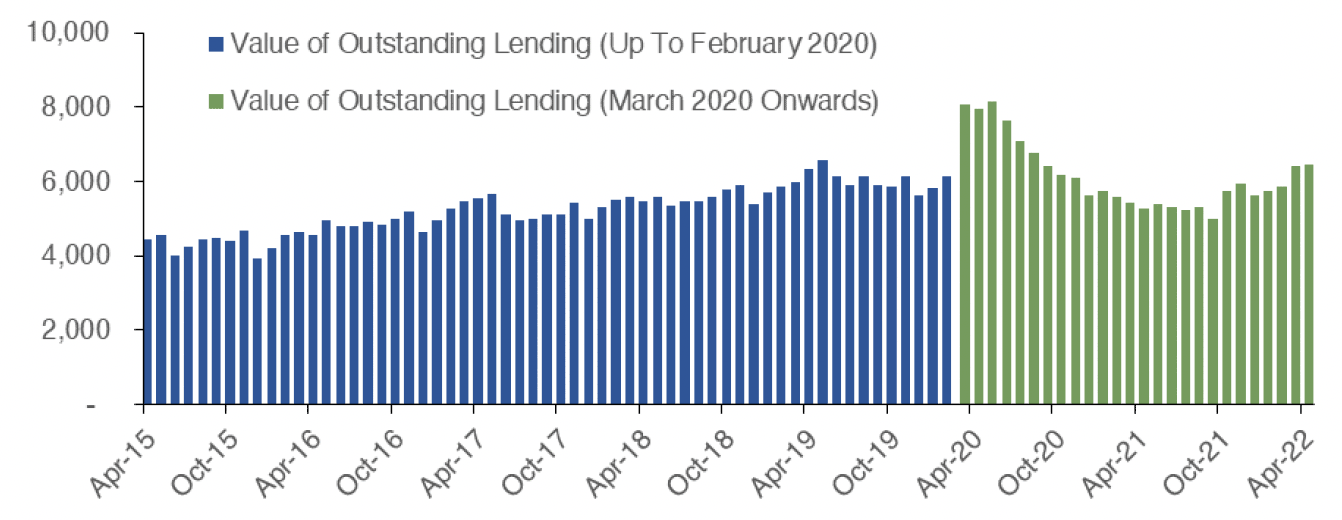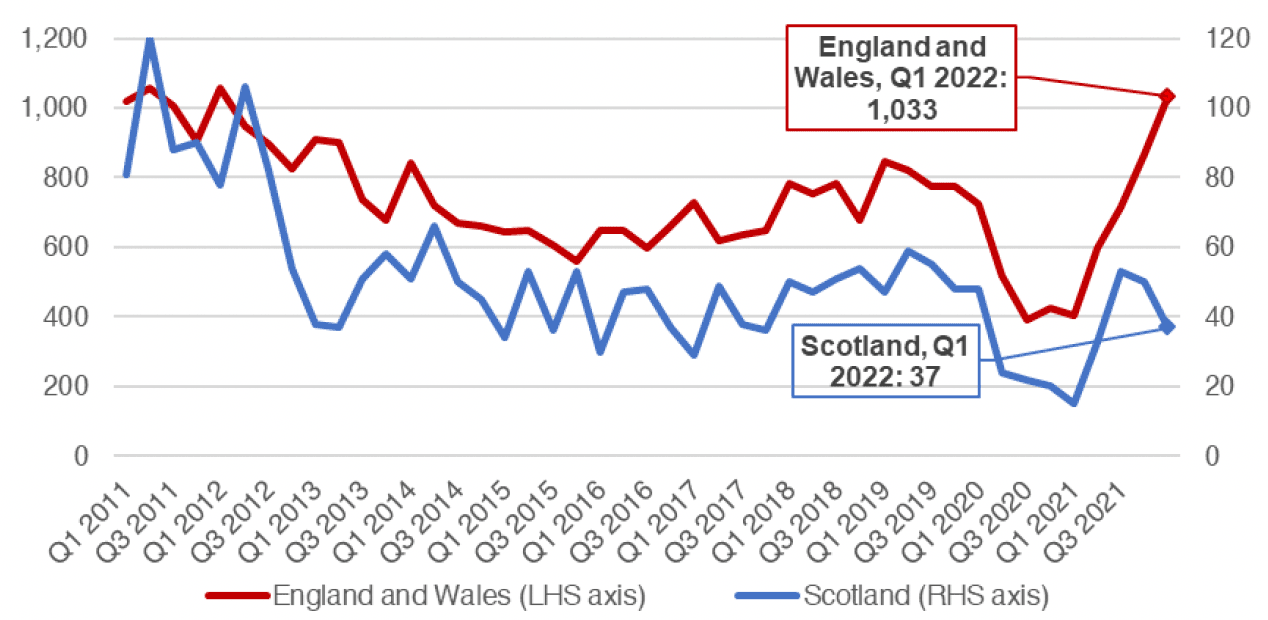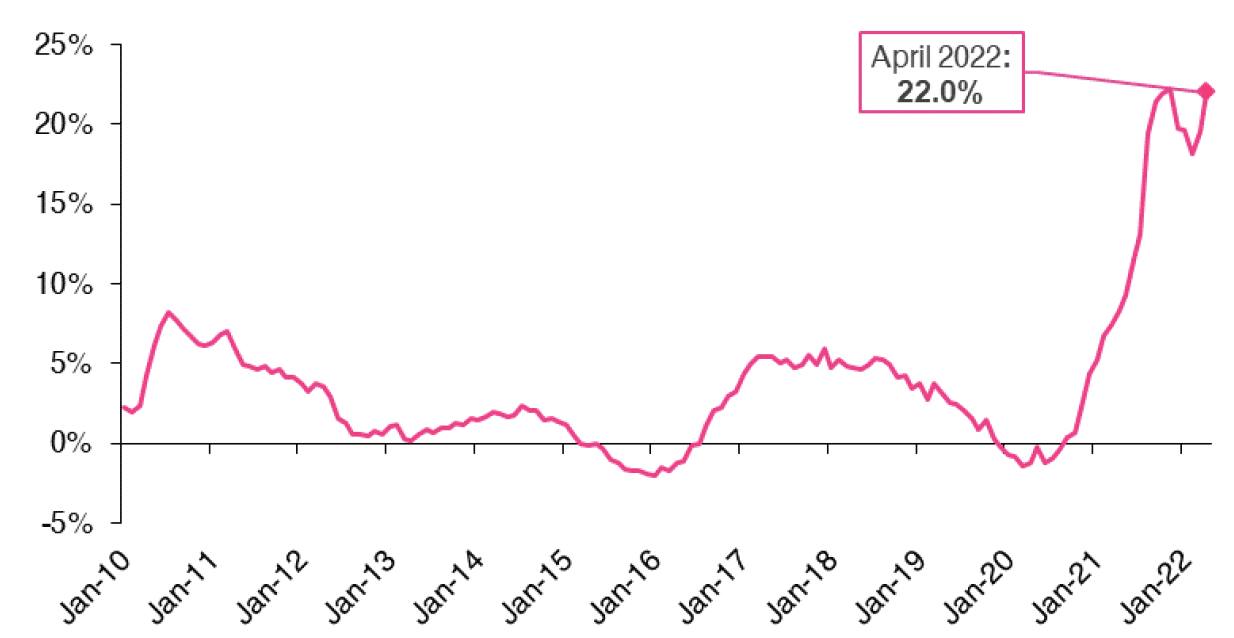Scottish Housing Market Review: Q2 2022
Scottish housing market bulletins collating a range of statistics on house prices, housing market activity, cost and availability of finance and repossessions.
10. Lending to House Builders, Insolvencies & Construction Material Prices
Lending to House Builders
The value of loans outstanding to UK firms involved in the construction of domestic dwellings rose by £1.9bn from February to March 2020, an increase of nearly one-third (31%), as shown in Chart 10.1. The sudden increase likely reflected the need for credit to fund short-term liabilities owing to Covid-19 restrictions on construction activities and home moves, which had adversely affected firms' income. In addition, firms may have drawn down funds as a precaution, given the economic uncertainty.
From May 2020 to September 2021 the value of loans steadily decreased, falling below pre-covid levels. However, the value of loans has begun to increase again, reaching £6.5bn in April 2022, 5.2% higher than the £6.2bn recorded in February 2020 immediately prior to the pandemic.

Source: Bank of England
Insolvencies
The health of construction firms can be identified by tracking the number of registered company insolvencies in the construction sector. Chart 10.2 outlines that during the pandemic insolvencies in the Scottish construction sector fell from 48 in Q1 2020 to 15 in Q1 2021, with a similar proportional fall evident in England and Wales, likely due to the business support in place. However, with this support unwinding and new build construction material prices increasing (as shown in Chart 10.3), registered company insolvencies in the construction sector in Scotland increased to 53 in Q3 2021, before falling somewhat to 37 in Q1 2022, which is 23% below the pre-pandemic level of Q1 2020. In England and Wales construction sector insolvencies have more than doubled from 403 in Q1 2021 to 1,033 in Q1 2022, the highest level since 2012.

Source: The Insolvency Service
Construction Material Prices
Data from BEIS on the cost of construction materials used in new house building (Chart 10.3) shows that annual construction material price inflation has accelerated since the early stages of the Covid-19 pandemic, when it was in negative territory, to stand at 22.2% in November 2021. Although there was a slight fall in annual growth until February 2022 (18.5%), this has increased once again in the last few months to 22.0% in April 2022, potentially due to Russia's invasion of Ukraine.
The annual increase in prices in April 2022 has been driven in particular by concrete reinforcing bars (+61.6%), fabricated structural steel (+45.9%) and particle board (33.5%).

Source: BEIS
Contact
Email: William.Ellison@gov.scot
There is a problem
Thanks for your feedback